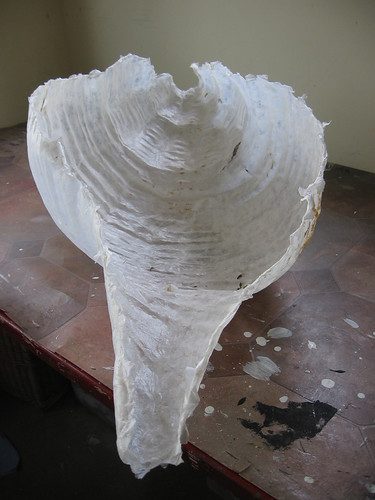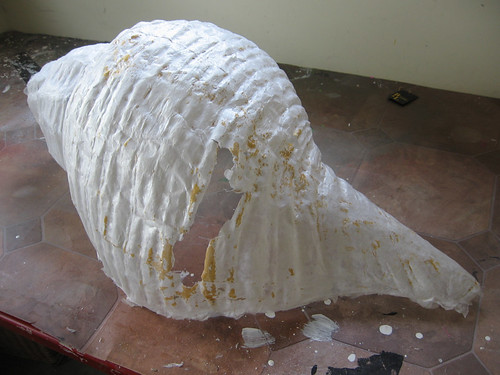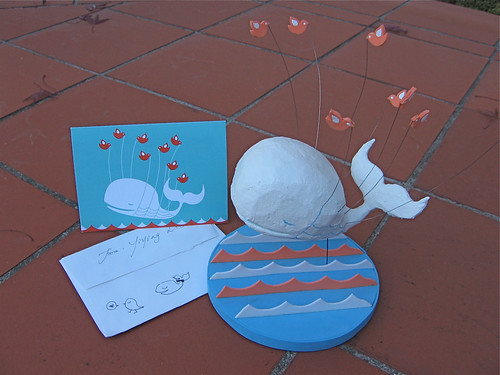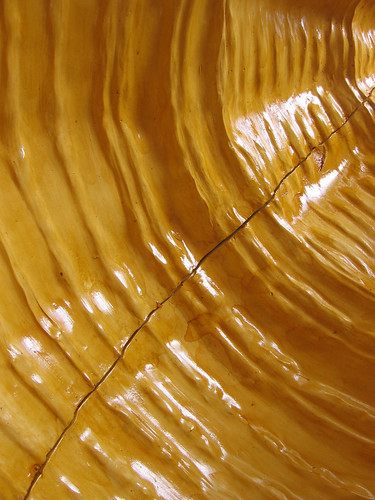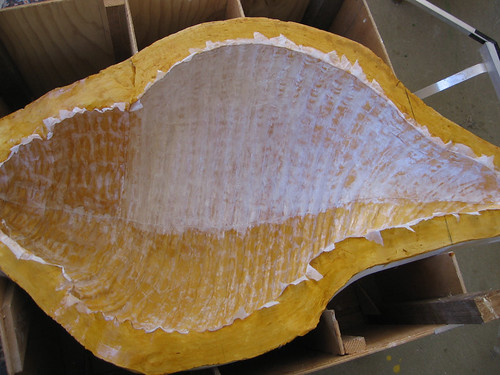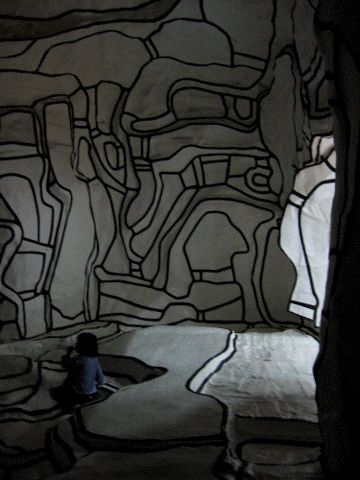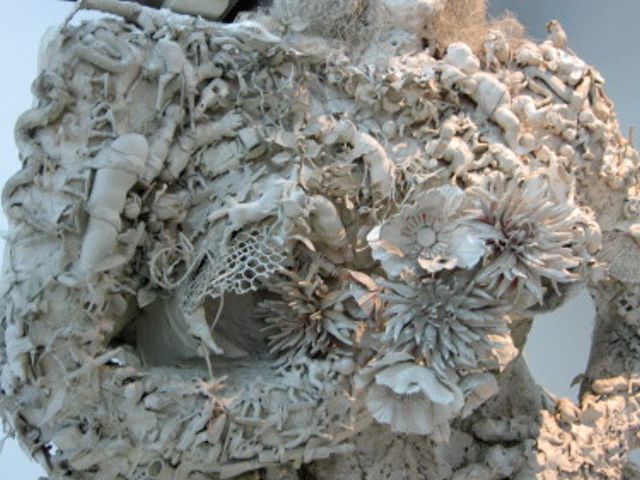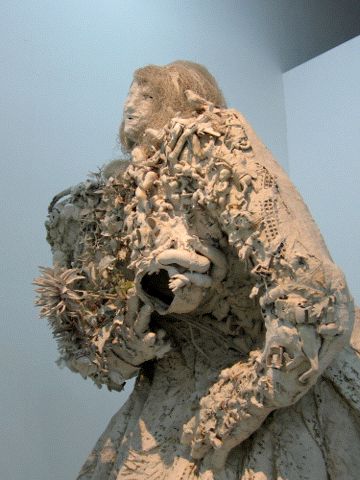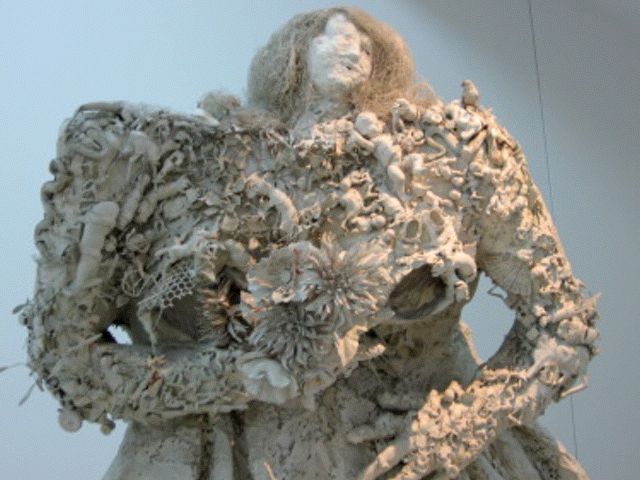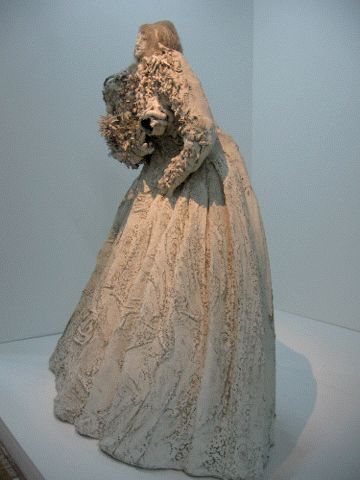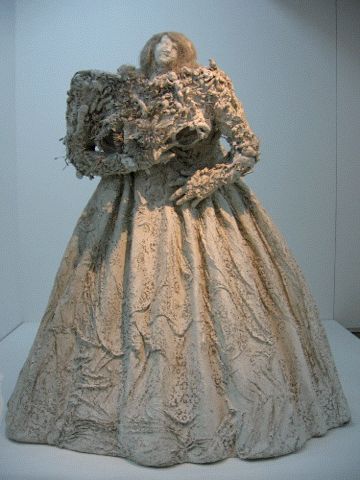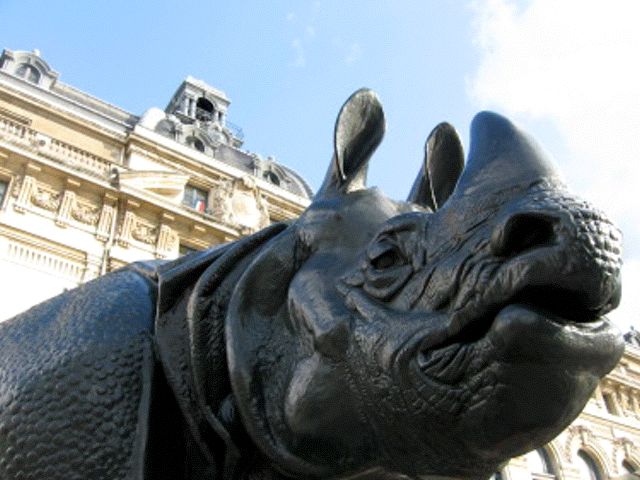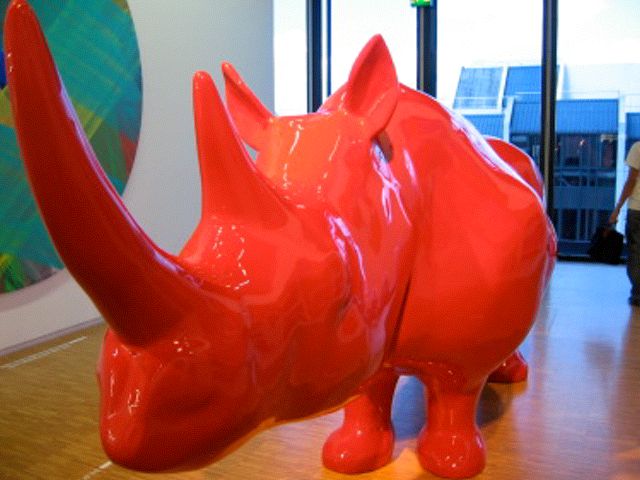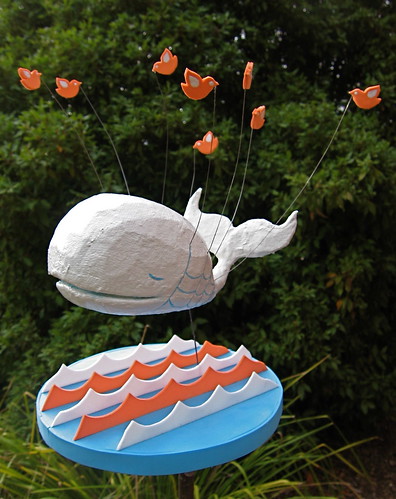Here are a few photos of how my tissue paper shell came out of the mould.
sculpture
Yay! a Fail Whale card!
I’m really happy – Yiying Lu sent me one of her cool Fail Whale cards! Here it is with my little sculpture. Thanks so much Yiying :)
3D Illustration
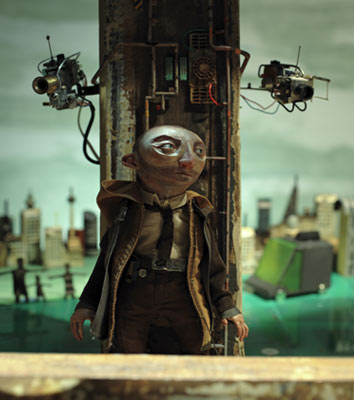
Chris Sickels at Red Nose Studio makes real figures and scenarios that are then photographed to produce cool 3D illustrations for papers, magazines and books. The 3D illustration above is his cover for Cory Doctorow’s story The Things That Make Me Weak and Strange Get Engineered Away. Before seeing this I had thought of 3D illustration as more a virtual rendering process. In this real form it is closely, and interestingly, allied to my work making puppets and props. I recently had a picture of my 3D fail whale published as an illustration in the Japanese computer magazine WEB+DB PRESS. I suppose that is fairly close – the only difference is in your intention when you start making an object?
(via @LolaLulu)
Working on a shell
I’ve promised myself to try to focus more on projects of my own, in between contract work for other people. I find it so easy to fritter time away when I’m not meeting other’s deadlines. So I’ve started back working on a big shell project I first started over 3 years ago. Back then I got as far as sculpting the shell out of clay, and making a ridiculously big and heavy plaster mold of it. It’s about a metre long. Luckily I did have the sense then to make a cradle on casters for it, so I don’t break my back trying to maneuver is around.
A few days ago I sealed the plaster with layers of shellac, which turned it this beautiful golden mustard colour.
Now I am paper mache-ing it inside with tissue paper. I want it to look flimsy and papery and almost transparent, but I don’t know how few layers I can get away with, and still have it come out of the mold intact. The idea of using very fine fibreglass is tempting, but I am sworn off working with fibreglass.
There are a few more photos at Flickr, where I’m making a photoset.
Jean Dubuffet
I’m seeing and liking quite a lot of artwork by Jean Dubuffet here in Paris. This kind of cave of his, called Le Jardin d’hiver, took my fancy, and I spent a while in it. It’s lumpy and bumpy and the lines don’t always go where you might expect them too. The little girl in the photo was really enjoying it.
The bride
Rhinos
Bunjil
In late 2002 on a train in Melbourne I caught a such a fleeting glimpse of this amazing massive eagle sculpture that I almost wondered if I had imagined it. Its air of keeping a brooding watchful eye over the docklands was arresting and exciting, and it was one of the the things that made me want to blog. There was little information and fewer images of it on the web at the time. Tim was down in Melbourne last weekend and had a similar experience, but was able to stop and take this cool photo of Bunjil the Eagle by the sculptor Bruce Armstong.
In between then and now my desire to blog Bunjil had been assuaged by reading Lucy Tartan’s excellent post about it in 2005, in which she writes about its appeal much better than I could. The post is one in a very enjoyable series which explores statuary in Melbourne.
The hero that is Fail Whale
My little kinetic sculpture of the lovely Twitter Fail Whale, based on the image by Yiying Lu that is used when twitter.com is over-capacity. The image is called ‘Lifting up a Dreamer’. I’ve wanted to make this since I first saw the image some weeks ago.
This is a short video of it in action, complete with twittering birds!
More photos here. (Update: fail whale widget here)
I remain optimistic and supportive of Twitter in the long term, because I think the real-time courier service rationale that was the founding impetus of the service constitutes a new branch off Doc Searls’ live web, and makes our online interactions a quantum step closer to Allen Searl’s original vision of ‘a Web where anybody could contact anybody else and ask or answer a question in real time’. Twitter’s track facility, presently down but still promised, provides the real-time search of people and and what they are talking about right now.
Maybe the progression of branching-off goes a little like this:
static web > live web > real time web
google > blogosphere > twittosphere
our property > our history in time > our real-time conversation
search by sending out bots> search by listening for pings > search by tracking people and words in real time
It may be that Twitter’s primacy will be usurped by some other real-time service that gets up ahead of them in the race; I hope not. But many great progressive ideas start off serendipitously or in fun without their full implications or potential being known, and in those circumstances it’s silly in hindsight to say the founders ought to have seen further, planned better and acted quicker than they did.
